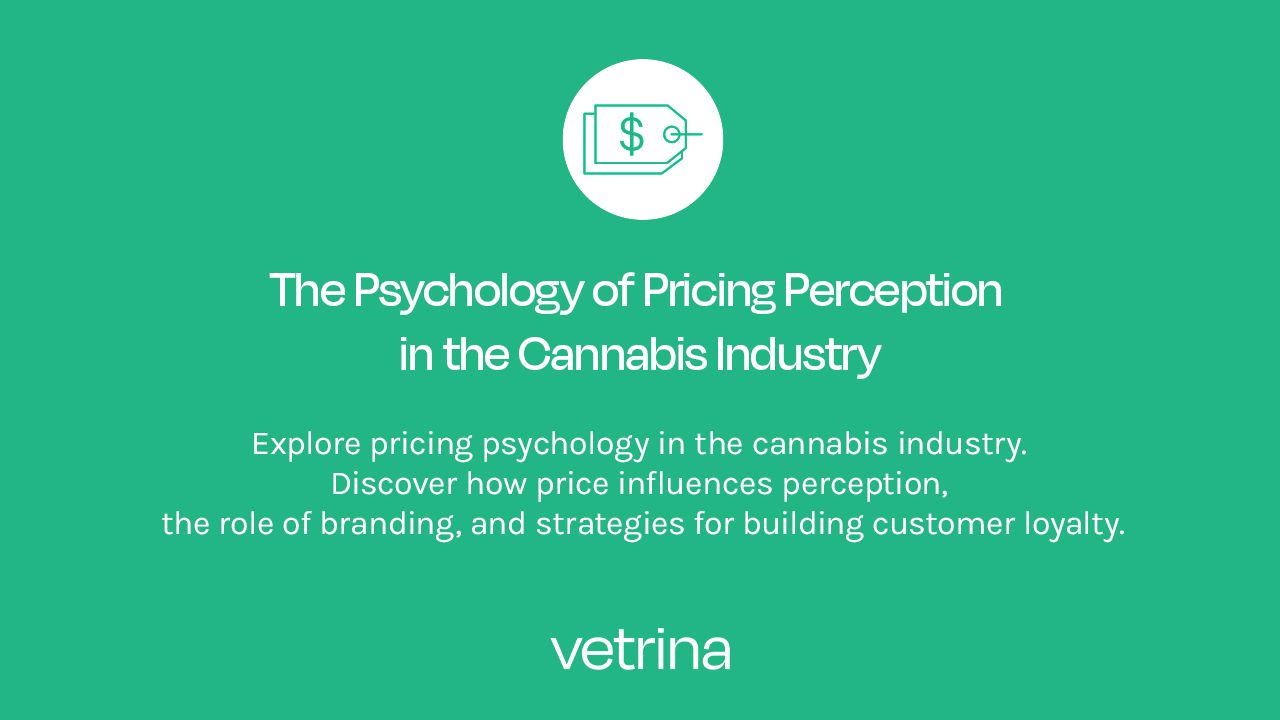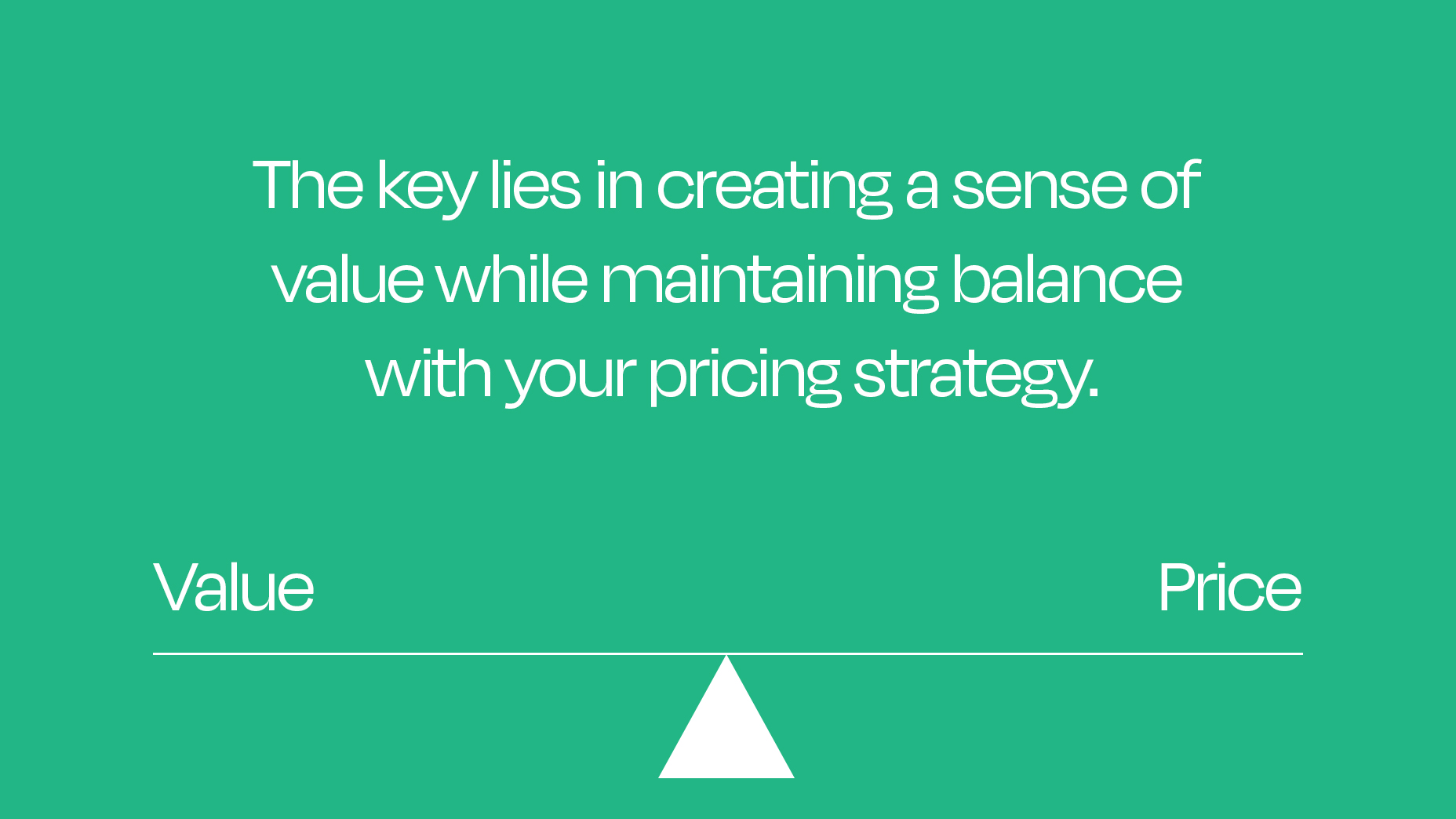
The Psychology of Pricing Perception in the Cannabis Industry
Sep 25, 2023Every day, consumers make choices about the products they purchase, often influenced by the price tag attached to each item. How does the price we pay affect our perception of value? It's a question that transcends industries, and the cannabis market is no exception.
If you are looking to increase your customer base, a common tactic can be to lower prices. However, simply dropping your prices and hoping for more foot traffic can be a risky tactic if you are not aware of the message you are sending to potential customers.
In this blog, we'll explore the intricate world of pricing psychology and its profound impact on consumer behaviour in the cannabis industry. From the allure of lower prices to the strategic use of price signals and the role of branding and customer loyalty, we'll uncover the strategies and insights that can help cannabis retailers and brands raise profits in the competitive landscape.
The Psychology of Pricing Perception
Consider your own experiences as a consumer. We are all guilty of paying for a lower ticket item, like a new notebook for $20, and not using it. If that very same notebook was being sold for $100, do you think you would be more likely to use it? It's a scenario most of us can relate to. The truth is, that we tend to place value on the things we buy in direct proportion to the price we pay for them.

When customers buy a product for a lower price, there's a higher likelihood that they won't fully appreciate it. It might get the job done, but they won't be enthusiastic about sharing their experience with others. Why? Because they have minimal "skin in the game". This psychological phenomenon applies to the cannabis industry as well.
Let's consider another example and break down what is happening with pricing perception a little further. Imagine you are shopping for canned vegetables. You might find a can of generic or store-brand green beans priced significantly lower than a can of a well-known national brand like Del Monte or Green Giant. Here's how consumers often perceive this price difference:
- Lower Price Perception: When consumers see the lower-priced generic can of green beans, they may assume that it's of lower quality or not as tasty as the more expensive national brand.
- Brand Recognition: National brands have spent significant resources on marketing and building their reputation. Consumers often associate these brands with quality, taste, and consistency.
- Ingredients and Packaging: Some consumers might believe that the lower-priced product contains lower-quality ingredients or that the packaging is not as visually appealing.
- Perceived Value: Consumers might be willing to pay more for the national brand because they perceive it as a higher-value product, even if the actual ingredients and nutritional content are similar.
But are we correct in assuming a low price means a low-quality product? The reality is that perception is not always accurate. In many cases, generic or store-brand products are produced by the same manufacturers as the national brands and may have similar or even identical ingredients and quality standards. The price difference often arises from marketing and branding expenses associated with national brands.
However, this perception of lower quality due to a lower price is a common phenomenon, and it highlights the role of branding, marketing, and consumer psychology in shaping our perceptions of product quality based on price.
Now that we covered a broader view of the psychology behind pricing perception, let's turn our attention to the cannabis industry and the realities of cannabis retail price perception.
Do Lower Cannabis Prices Lead to Lower-Quality Buyers and Consumers
The short answer is yes. There is research to back this.
At Vetrina we show our clients that the key lies in creating a sense of value while maintaining balance with your pricing strategy. Cannabis retailers can cater to value-focused customers by offering affordable product options without sacrificing quality. This approach provides a sustainable game plan for remaining profitable while attracting price-sensitive consumers.

What Can Impact Price Perception in Cannabis Retail?
Now that you know consumers connect price to value, and that lower prices can have unintended consequences, let's review some commonly used cannabis retail tactics or concepts that can help you influence pricing perception in your cannabis business or brand.
Price Signaling Theory in the Cannabis Industry
Let’s dig into Price Signaling Theory. At Vetrina, we help our clients become experts in understanding how pricing a product sends a message to consumers. It is crucial to be aware of the message you are broadcasting. Here's how it applies:
- Quality Signaling: By pricing certain cannabis products at a premium, retailers can signal to consumers that these products are of the highest quality, carefully sourced, and meticulously crafted. This can attract discerning customers who seek top-tier cannabis brands and products.
- Value Signaling: Cannabis retailers may use competitive pricing to signal value and affordability. This strategy appeals to budget-conscious consumers without necessarily compromising on product quality. Used sparingly this pricing strategy appeals to the price conscious consumers.
- Market Conditions Signaling: In a dynamic industry like cannabis, pricing changes can signal shifts in market conditions. For example, a temporary price reduction on specific products may communicate a seasonal promotion or a surplus in supply.
- Competitive Positioning: Price signalling also helps cannabis retailers position themselves relative to competitors. Premium pricing can suggest exclusivity and luxury, while more accessible pricing can indicate inclusivity and accessibility.
- Information Asymmetry: In the cannabis industry, where product information may be limited due to regulations, consumers often rely on price as a proxy for quality. Cannabis retailers and brands can use price signals to bridge information gaps and guide consumers' choices.
- Building Trust and Credibility: Consistency between price and product quality is crucial for building trust and credibility. If a retailer consistently delivers high-quality products at premium prices, consumers are more likely to trust the brand's pricing signals.
Using Penetration Pricing to Attract New Retail Cannabis Consumers
Imagine a new cannabis product hitting the market—perhaps a unique strain, a cutting-edge vaping device. To pique the interest of consumers and gain a competitive edge, a cannabis brand drops the price as part of its launch strategy. They are employing penetration pricing to create a lower-than-usual price point to serve as a powerful magnet to draw in early adopters and curious cannabis consumers.
Penetration pricing is not common in the cannabis industry unless the market is mature. However, it should be noted that this is a strategy, not the norm for your cannabis retail location. To be mindful of your margins and the signal you are sending to your consumers, it is important to use penetration pricing selectively.
The primary goal of penetration pricing is not just to offer a temporary discount but to build market share rapidly. By providing exceptional value through lower prices, cannabis retailers and brands aim to encourage a large number of customers to try their new product. This initial influx of customers can help establish brand recognition and loyalty early on.
While penetration pricing lures customers in with lower prices, the strategy typically involves a planned approach to gradually raise prices back to normal levels once the product gains traction and a dedicated customer base. The challenge lies in striking the right balance—offering a compelling introductory price without compromising the long-term profitability of the product.
Building Customer Loyalty Beyond Pricing in Cannabis Retail
Loyalty in the cannabis industry goes beyond pricing, and a great start is understanding your own data and not jumping straight to lowering prices. We have seen our consulting clients be surprised that, once a loyalty program was implemented to help track spending habits, their most loyal customers were the segment most likely to take advantage of a coupon.
This experience underscores the importance of using promotions as a tool to reward existing customers and increase loyalty. However, it's crucial to ensure that these promotions lead to higher overall sales, rather than merely substituting purchases that would have already been made, just at a lower cost. This approach allows both cannabis retailers and brands to appreciate the nuances of their customer data and avoid making assumptions, such as assuming that only customers who spend less will use a coupon.
While price-sensitive customers are attracted by lower prices, building lasting loyalty requires a multifaceted approach, such as:
- Exceptional Customer Service: Provide exceptional customer service that goes beyond transactional interactions. Educate customers, offer personalized recommendations, and create a memorable shopping experience.
- Product Quality: Consistently deliver high-quality products that meet or exceed customer expectations. Quality products can justify premium pricing and encourage repeat business.
- Consistent Brand Messaging: Ensure your brand messaging is consistent across all touchpoints, from advertising to social media. A coherent brand narrative fosters trust and brand loyalty.
- Rewards Programs: Implement loyalty programs that reward repeat customers with exclusive discounts, early access to new products, or other incentives.
- Community Engagement: Engage with your community through events, workshops, or educational content. Building a sense of belonging can create loyal customers who support your brand.
The Role of Branding and Value Perception in the Cannabis Industry
Branding plays plays a big part in how customers think about the worth of something. In the cannabis industry, where differentiation can be challenging, a strong brand identity can justify higher prices.
Customers often associate well-defined brands with quality, authenticity, and trustworthiness. By investing in brand development and storytelling, cannabis businesses can elevate the perceived value of their products, allowing them to command higher prices without alienating customers.
Tip for Cannabis Retailers and Brands:
Retailer Strategies:
- Protect Your Margin: Maintaining profitability is crucial. Avoid deep discounts by diversifying your product assortment, exploring unique offerings, or partnering with craft farmers to differentiate yourself from competitors.
- Collaborate for Value: Consider collaborating with complementary brands to offer bundled deals. This can enhance the perceived value of your products for customers.
Brand Strategies:
- Persistence Pays Off: If you're a cannabis brand, don't give up. It may take multiple attempts to get your products on the shelves of retail locations. Follow up with store buyers and be open to feedback.
- Nurture Relationships: Once your products are on the shelves, focus on building strong relationships with retailers. This prevents competitors from edging you out and helps maintain your presence in the market.
By carefully considering how price signals are perceived, cannabis retailers can attract the right customers, build trust, and navigate the competitive landscape effectively.
If this blog has you wondering who you are attracting to your cannabis retail location or brand, make sure to subscribe to our newsletter as we continue to share expert insights you can action.
Tactical insights to become
a Cannabis Retail Insider!
Access expert insights in one easy-to-digest
and follow-along newsletter.
We hate SPAM. We will never sell your information, for any reason.

